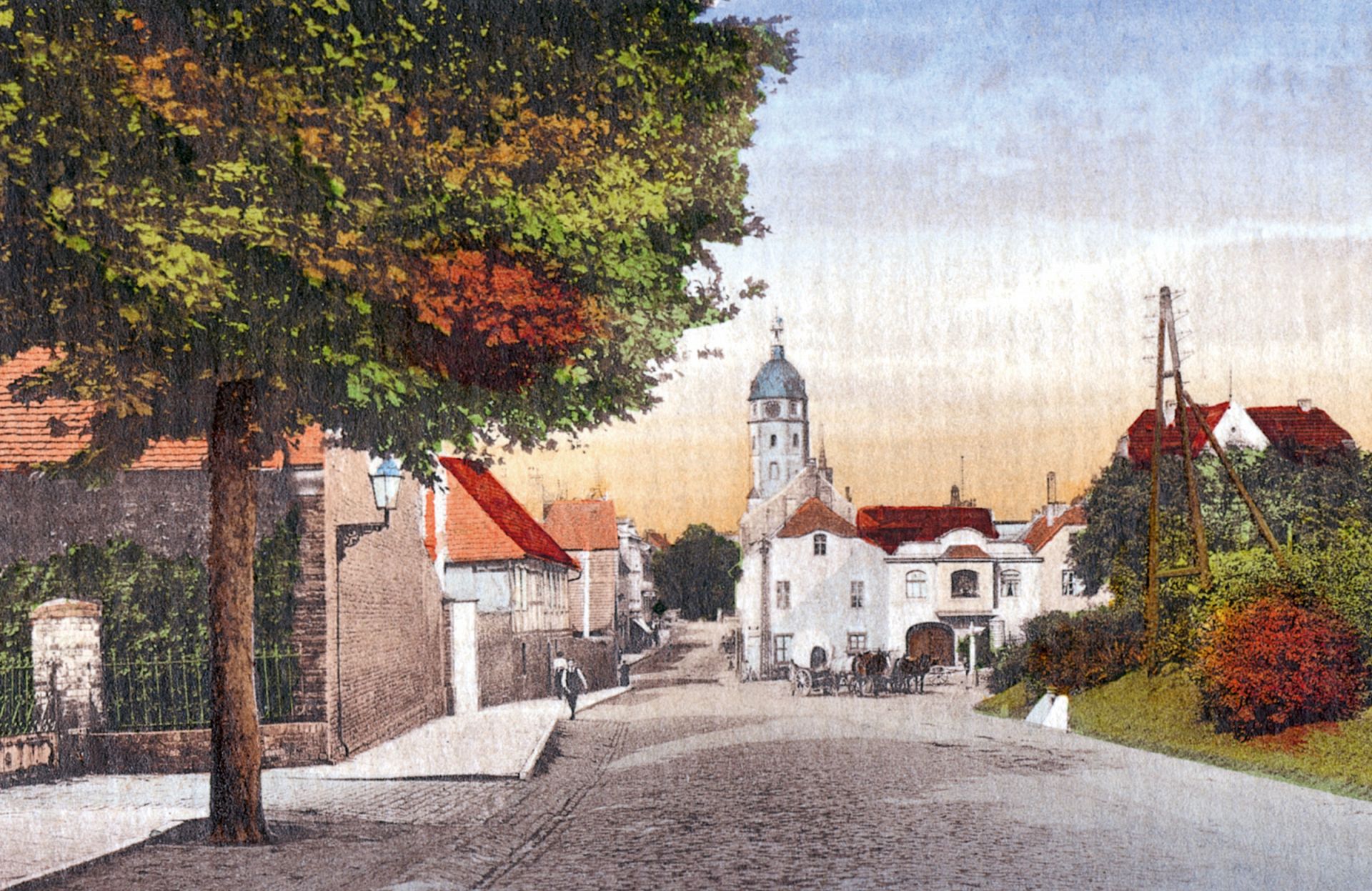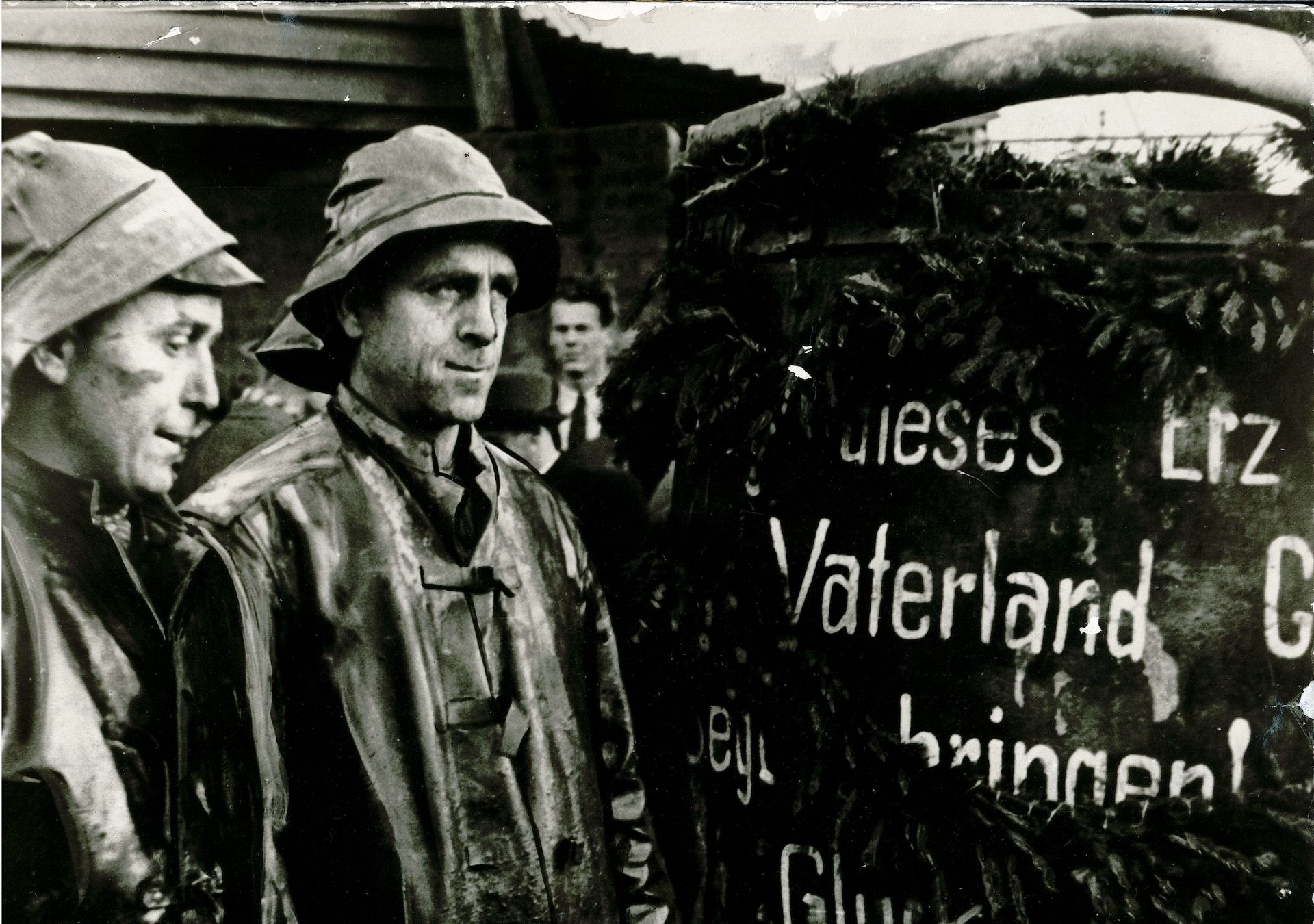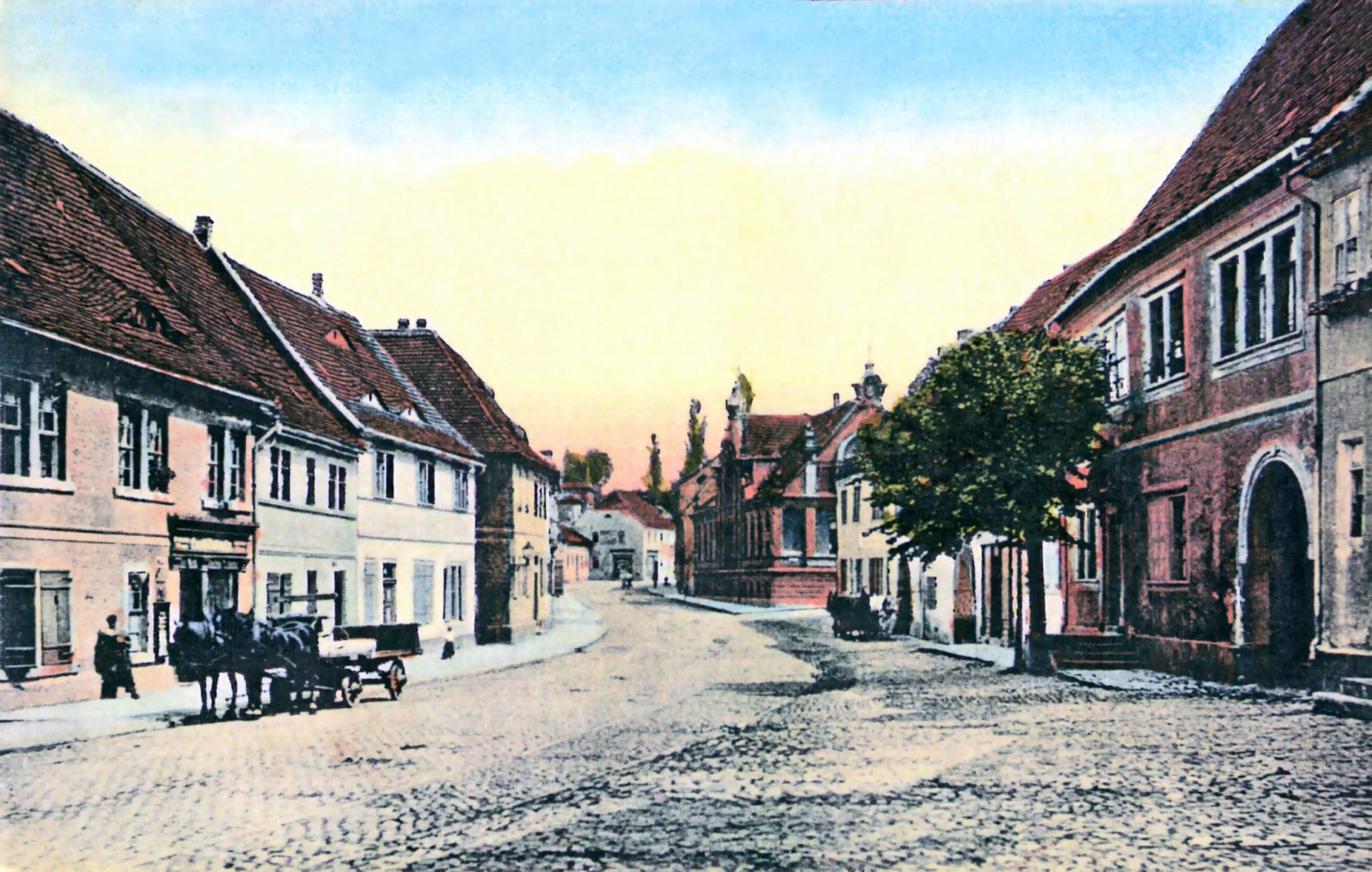


6th century
Sangerhausen originates as a Frankish foundation. The name "Sangerhausen" can be derived as follows: sanger - absengen, hausen - Frankish settlers.
780 - 800
Mention of Sangerhausen in the document book of the Fulda monastery.
840 - 899
Sangerhausen is mentioned in the tithe register of the Hersfeld monastery.
04.10. 991
Document of Emperor Otto III, ,,villa sangirhus": The village of Sangerhausen is mentioned.
1116 - 1123
The Ulrich Church, a three-nave, cruciform, vaulted Romanesque pillar basilica, is built by the Thuringian Count Ludwig II. (the knight). It is the oldest and most important of the town's surviving buildings.
1194
Granting of the town charter: Sangerhausen is a fixed place with a rampart and moat (oppidum).
1204
Sangerhausen is first described as a "civitas" = town in the Reinhardsbrunn annals.
1220 - 1260
The Blessed Jutta of Sangerhausen, who met Mechthild of Magdeburg, lived in the town. Today there is a Jutta von Sangerhausen Square in Sangerhausen at the Ulrich Church. Sangerhausen is one of the Women's Places in Saxony-Anhalt.
In 1260
Heinrich the Illustrious of Meissen had the (present-day) Old Castle built. Around the same time, the city walls are mentioned for the first time (in the south 4.24 metres high with 10 towers, the other three sides 3.25 metres high with 14 towers).
1350
Building of St. Mary's Church.
1358
The town hall is mentioned for the first time.
1431 - 1437
The eastern part of the town hall is built.
1457 - 1542
The late Gothic three-nave hall church of St. Jacobi is built as the market church. Its steeply westward sloping tower with the moon clock next to the eastern clock face is one of the special features of the old town.
1516
Martin Luther is in Sangerhausen and visits the Augustinian monastery.
1539
Introduction of the Reformation in Sangerhausen. The Augustinian men's monastery and the Cistercian women's monastery of the Ulrich Church are secularised. The first town school is established in the Augustinian monastery.
1542
The "Ark", a well for water supply, is built on the Neuer Markt.
1592
Building of the Trillerei (Ulrichstraße 20, demolished in 2014).
1604
The western extension of the town hall is built. Today it is a landmark of the city.
1616 - 1622
The Electoral Saxon Rentmaster Kaspar Triller has the New Palace built at the south-eastern end of the Neuer Markt. In the 18th century it serves as a secondary residence of the Duchy of Saxony-Weißenfels. Later, the district court is established here, which is still located here today.
1634
Cessation of mining near Sangerhausen.
1675
Resumption of mining at Sangerhausen.
1702
Unsuccessful application by Johann Sebastian Bach to St. Jacobi.
1737 - 1738
Johann Gottfried Bernhard Bach becomes organist at St. Jacobi.
1816
With the annexation to Prussia, the district of Sangerhausen is founded. Sangerhausen becomes the district town with the seat of the district administrator.
1820
Abolition of the customs.
1823 - 1825
Demolition of the Kylisches Tor.
1826
Demolition of the Riestedt Gates.
1844
First street lighting with 13 beet oil lamps.
1844
Demolition of the water gate.
1857
The first mechanical weaving factory starts production.
1865
Foundation of the machine factory and iron foundry.
1865
With the commissioning of the Halle-Kassel railway line and the inauguration of the old railway station building, the age of industrialisation progresses in Sangerhausen.
1872
Building of the malt factory (now demolished) and inauguration of the grammar school.
1874
Commissioning of the municipal hospital in Riestedter Straße.
1879 and 1881
The Berlin-Blankenheim and Magdeburg-Erfurt railway lines are put into operation. Sangerhausen develops into an important railway junction.
1879
Demolition of the Göpentor.
1889
Foundation of a stock file factory.
1894
The new Catholic Church of the Sacred Heart in Mogkstrasse is solemnly consecrated.
1894
Construction of the municipal sewer system.
In 1903
The Rosarium was established. Today, more than 8,000 rose varieties and species can be seen in the approximately 13 hectare park area, and more than 350 different and rare woody species complement the rose show.
1907
Foundation of the Mitteldeutsche Fahrradwerke (Mifa), today Sachsenring-Bike.
1925
Commissioning of the mother house and
the tax office (today police station).
1927
Commissioning of the cinema at Kornmarkt.
1931
Building of the Stadtsparkasse in Göpenstraße and the Kreissparkasse in Hüttenstraße (in both buildings you can still find valuable evidence of the architecture of the "New Building").
1939 - 1941
Construction of one of the granaries in Speicherstraße.
22.2.1945
American bombing raid, damage in Mogk-, Morunger- and today's Thälmann-Straße.
8./10.4.1945
Explosion of an ammunition train and destruction of the station building.
12.4.1945
Occupation by American forces.
3.7.1945
Surrender of the city to the Soviet Army and withdrawal of the Americans.
7.10.1949
Foundation of the German Democratic Republic (GDR).
1951
Start of copper slate mining in the newly sunk Thomas Müntzer shaft.
1952
Inauguration of the Spengler Museum as the first new museum building in the GDR.
1951 - 1990
Residential estates with 8,700 flats are built around the historic old town, soon housing about 20,000 people.
7.10.1963
The new station building is put into operation as the first new station building in the GDR.
2.5.1971
Roof truss fire at St. Jacob's Church.
1978
Consecration of the restored Hildebrand organ in St. Jacobi.
16.10.1989
The peaceful revolution also begins in Sangerhausen with the first meetings and rallies.
May 1990
First free local election: Dr. Klaus Czudaj (CDU) becomes mayor. The establishment of new administrative structures follows.
3.10.1990
German reunification.
1991
Foundation of the Verein für Geschichte von Sangerhausen und Umgebung e.V.
1991
Sangerhausen solemnly celebrates the year of its 1000th documented mention and great changes begin: Copper slate mining is discontinued and economic restructuring begins. The urgently needed renovation of the Romanesque Church of St. Ulrich begins, and the roof of the town hall is given a new slate covering. The redevelopment of the historic old town with urban development funds in a 54-hectare redevelopment area is begun.
In 1992
With the help of funding from the European Union, a commercial area is established to the west of the city. Today, other industrial estates have been added. The 90th anniversary of the Rosarium's foundation is celebrated. The Rosarium is given the title "European Rosarium".
7.5.1993
The oldest and most important building in the town of Sangerhausen is honoured by the inclusion of the Ulrich Church in the "Romanesque Road" of Saxony-Anhalt.
1996
Fritz-Dieter Kupfernagel (PDS) is elected Lord Mayor.
1998
Inclusion of the old town in the programme of urban monument protection.
2003
The expansion of the Europa Rosarium begins. The rose collection has now grown to over 7,000 specimens. The 100th anniversary of the world's most important rose garden is celebrated - and the people of Sangerhausen celebrate 800 years of town charter.
2008
The 15th anniversary of the "Romanesque Road" in the state of Saxony-Anhalt is celebrated. The Ulrich Church is also part of it.
2010
The rebuilt Renaissance oriel at the New Castle (now the local court) is ceremoniously inaugurated on 30 April. Ralf Poschmann (CDU) is elected Lord Mayor. The renovation of the roof truss, east gable and staircase of the town hall at Markt 1 is completed. Sangerhausen is also involved in the International Building Exhibition. Several projects attract public attention, e.g. the renovated listed ensemble in the Westsiedlung am Bergmann. The renovation of the exterior and interior (except for the floor) of the Ulrich Church is also completed, and the restored Strobel organ is inaugurated.
14.11.2013
The restored "Kobermännchen" in the New Castle is ceremoniously inaugurated.
2015
Completion of the A71 motorway from Schweinfurt to Sangerhausen. The Saxony-Anhalt Day is held in the town. Completion of the renovation, repair and conversion work at Sangerhausen railway station, which has since become municipal property. Sven Strauß (SPD) is elected Lord Mayor.
31.12.2017
Through a fundraising campaign, St. Mary's Church receives four new bronze bells, two of which are cast on site in front of many spectators. All four bells will ring out for the first time on the occasion of the 500th anniversary of the Reformation during an ecumenical festive service.
June 2019
The city council decides by an overwhelming majority to purchase a new council bell for the historic city hall.
1.9.2020
A new council bell is publicly cast to mark "75 years of peace in Sangerhausen".
As the district town of the Mansfeld Südharz district in the south of the federal state of Saxony-Anhalt, Sangerhausen today has a high proportion of the population in the district with its 14 incorporated villages and approx. 26,000 inhabitants. The town occupies a central position in the region due to its size, labour force potential and transport location. The important trunk roads B 80 and B 86 as well as the two railway lines Halle-Nordhausen-Kassel and Magdeburg-Erfurt cross here. The A38 (Halle-Göttingen) and A71 (Schweinfurt-Sangerhausen) motorways are important traffic routes. Today, the city has two motorway exits as well as a motorway junction in the immediate vicinity.